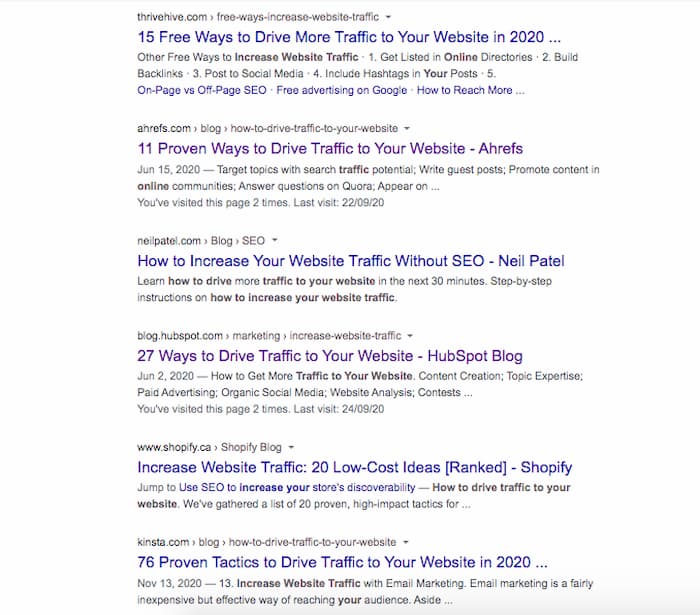
One of the biggest components of search engine optimization is being able to perform an SEO competition analysis. It is a necessary evil of SEO that must exist in order to identify what it takes to rank in the top positions.
Analyzing your competitor’s can reveal an incredible amount of information about what is being used to rank highly. Search intent is a major point to tackle when it comes to providing content that ranks highly. If you can identify what it is and how it is being answered you have a major ranking factor taken care of.
Part of that process is also identifying the keywords and backlinks that your competition is using to fuel a top ranking in the SERPs.
This article details the various tools, strategies and steps in an SEO competition analysis that are used to uncover information about the websites that are ranking for your target search terms.
Table of Contents
TogglePerform a SERP Analysis
When you want to rank for a specific keyword one of the first things you want to do is get an idea of the competitive landscape. Your competition in the real world may not be an exact reflection of who you’re competing with online.
SEO can be an area that some companies pursue more aggressively than others. It’s possible there are major competitors in your industry that could have a location on the same block as you and yet they’re not ranking for the same keywords.
The flipside of the coin is that there may be companies you haven’t heard of that are on the first page of Google for important keywords to your business.
The point is that you need to look at the search engine results page for important search phrases to get an idea of who you’re competing against.
Assess the authority of your competition
The authority of a website refers to the level of trust, credibility and overall ranking ability it has in your industry. When a website has a lot of backlinks pointing to its domain, it will have high domain authority. You’ll need to compare the authority of the domains that rank in the top 10 positions to your own domain authority for every SEO competition analysis you perform.
What is domain authority?
Domain authority refers to a website’s ability to rank based on the number of links it has acquired from credible websites. It’s important to understand that Google uses what’s called PageRank to assign a value to a page based on its ability to rank.
Although no one knows for sure how PageRank is determined, we know that a good deal of it is based on the quantity and quality of the backlinks pointing to the page.
Google’s patent states that the popularity of a website can be determined by how much it is being shared on the web by other websites. The number of backlinks from related websites speaks to the credibility of the content.
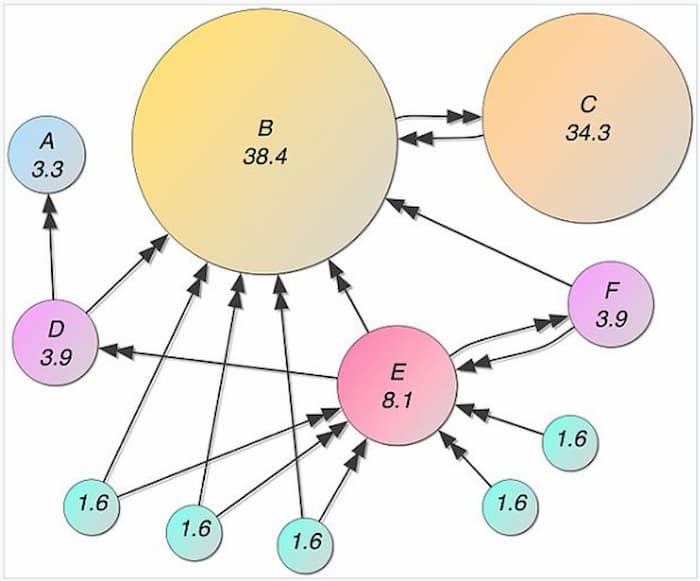
Therefore, links from websites that have accumulated a large number of backlinks from other websites with high volumes of backlinks (authority websites) will have the most impact on a website’s authority rating (or PageRank) and ranking ability.
How do you measure domain authority?
Google stopped publicly displaying PageRank in 2016 in an effort to reduce page sculpting tactics and rank manipulation. In the absence of PageRank, companies like Moz, Ahrefs and Majestic developed their own system for assigning authority.
Moz: Domain Authority and Page Authority (DA and PA)
Ahrefs: Domain Rating and URL rating (DR and UR)
Majestic: Trust Flow and Citation Flow (TF and CF)
Although none of these units of measurement is the exact formula Google uses to determine PageRank, they provide a gauge for determining the authority of a site. Each authority rating is based on the quality and quantity of the linking websites. Whichever form of measurement you use it’s wise to keep it consistance in an SEO competition analysis.
What’s the difference between domain authority and page authority?
Domain authority refers to the strength of the domain as a whole. It’s a measure of the total backlinks that are pointing to all of its pages.
Page authority refers to the strength of a page only. Page authority is derived from the backlinks that are pointing to it as well as the inherent authority passed on from the domain.
The advantage of high domain authority is its ability to rank. As a result, its pages will inherit a minimum amount of authority when they are published which means because of the authority the domain carries, the pages will not need as many backlinks (if any at all) to rank for a keyword it’s targeting.
Related reading: How to Make Your Site Appear First On Google
For example, brand new websites start with a DA of 1 (using Moz system of measuring domain authority). When it first publishes a page, it will need to acquire backlinks to compete with a website that has a DA of 50 since it’s newly published pages mostly likely start with a page authority with a DA between 20 or 30.
Websites with high domain authority rank for more keywords mainly because they have more backlinks.

Tools to compare domain authority
One of the most convenient ways to compare domain authority directly from the results page is to use a plugin that gives you a quick summary of the pages on the SERP. Each of the major analytic tool companies offers their own version but Mozbar seems to be among the most popular because they offer a free version that gives you the DA, PA and number of backlinks, which is exactly what you need to start your comparisons for your SEO competition analysis.
Use plugins for a high-level SERP assessment
Here is an example of how the SERP looks when using the Mozbar.
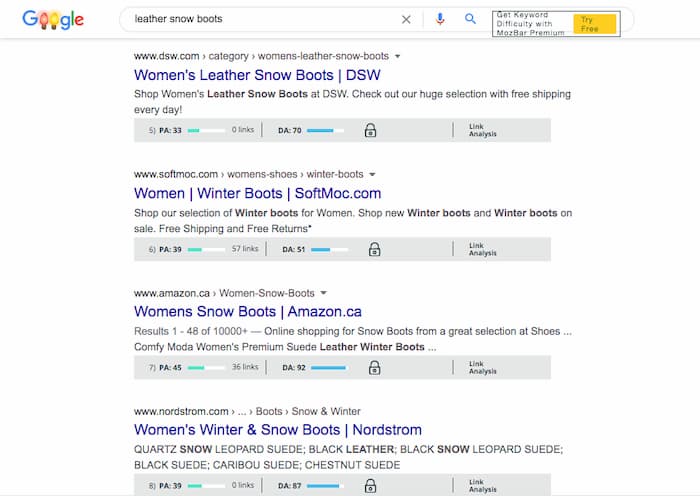
You can immediately get an idea of the domain authority, page authority and the number of backlinks for each website in the top 10 results. Of course, this is at a high level to give you an idea of whether you should look deeper into detail.
Ahrefs also provides a toolbar with more capabilities; however, you need to subscribe to their service to get the features.
If the websites on the SERP are comparable to your own, you can look at the top five domains individually to come to a greater understanding of what types of links are being used to rank the page.
Backlink Analysis
Whenever you’re assessing a competitor’s backlink profile, you should take note of the referring domains, the types of links and the domain authority of the linking sites. You’re looking for possible opportunities to get these links yourself, while also trying to establish a strategy for your own link building campaign.
Referring domains
The number of referring domains is an important metric in your SEO competition analysis because it paints a clearer picture of the strength of the domain. In the situation where two domains have the same number of backlinks, the one that has more referring domains is going to have more authority (depending on the quality of the links of course). The website with less referring domains means they received multiple backlinks from one site in particular, which wouldn’t be as strong an indication of the popularity of the website.
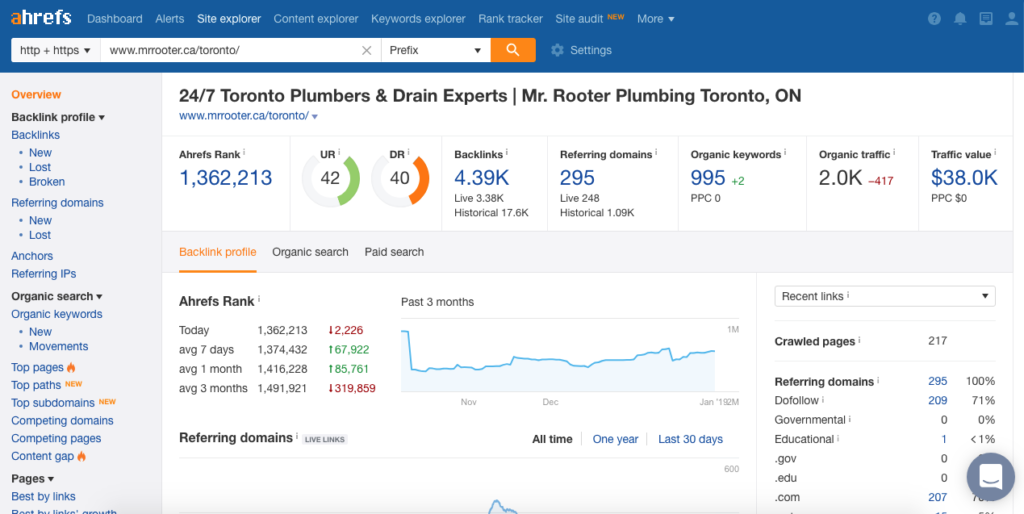
Gauge the number of backlinks needed in your link building campaign
This aspect is important to note when assessing your competitors link profile. If there are a high number of referring domains, you’re going to need to build a prospect list that yields comparable numbers. Surpassing the number of referring domains can put your website out in front of the ranking.
Find likely linkers
Another aspect of comparing referring domains to the total number of backlinks is determining who are the websites most likely to link to your content. When there is a high number of backlinks compared to referring domains, it means there are websites linking more than once to your competition.
You may be able to reach out to websites that are linking multiple times to your competitor’s pages since you share the same topics. If they are enjoying your competitors’ content you can look up the pages that they’ve linked to and use the skyscraper method to publish something similar but better.
You would then reach out to the likely linkers and them about your improved version of content and ask them to give you a link.
Identify low-quality links
Although you never aim to use low-quality websites in your link building campaign it’s important to identify them during an SEO competition analysis to uncover opportunities. If you find that a page is ranking from a lot of low-quality links, you may be able to outrank it with just a few quality links.
Reverse engineering how your competition is maintaining their top ranking provides insight into how you strategize your SEO campaign.
Content gap analysis by keywords
One of the best ways to identify relevant content to rank a page is to find the keywords that a competing page ranks for that you don’t. In order for a page to rank for a keyword, it has to have content that satisfies the intent of the search.
When you find unique keywords a competing page ranks for and you don’t it’s an opportunity to optimize for that term to improve your page’s ability to satisfy search intent. The additional content will not only add another keyword to rank for but create more relevance for your initial target keyword.
Traffic analysis
The traffic a website receives determines the success of generating leads and revenue. You can learn a lot about how a company generates revenue by analyzing both their organic and paid traffic.
Organic traffic
Organic traffic mainly comes from content that ranks, as well as direct searches for a business. Run a report on the non-branded terms that a website ranks for to see whether there are new opportunities for your website to rank.
You can run a keyword gap analysis on the top 5 domains you compete with in order to streamline this process. Most major analytic tools offer this option. Here’s a screenshot from SEMRush on their version.
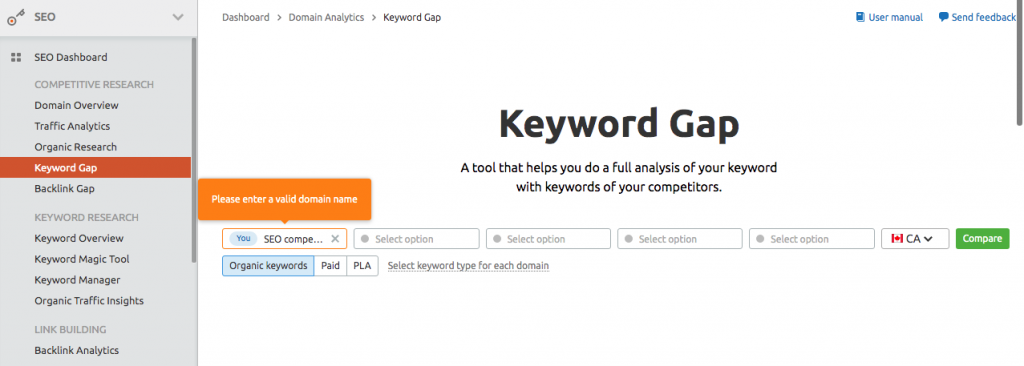
Paid traffic
Here you will find some of the highest converting terms that you may not find from a regular keyword report. Look to see what keywords are in your competition’s paid traffic report because they are obviously making money on those keywords if they’re paying for every click to their website.
You may want to create a landing page optimized to target these terms as they’re usually transactional terms that users are typing into search engines.
Sales script
One of the things to look out for is the way your competition is writing ads. If an ad is successful in attracting a high number of clicks, it most likely has wording that’s working to attract users’ attention. Promote a higher click-through rate by using similar phrases to generate a higher CTR.
Identify and duplicate content type
It’s advisable to follow the most predominant type of content that ranks on the first page of the search results. Remember that search engines place a high priority on a website’s ability to answer search intent. If there is a popular content type that populates the first page, it’s because search engines are favouring that format.
For example, if 5 of the top 10 results are list-styled forms of content, you would improve your page’s chance of ranking if you followed suit. If you search the term “How to drive traffic to your website” you would see that 8/10 pages are numbered lists.
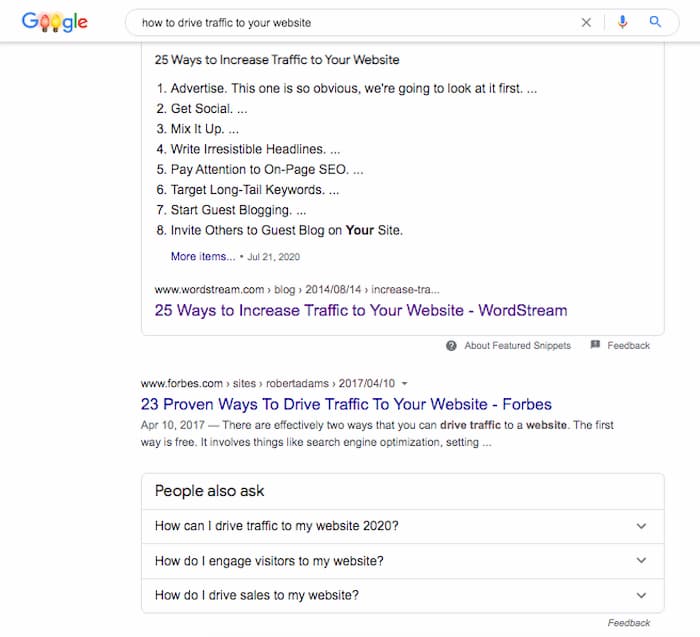

If you wanted to rank for this keyword, you would have the best chance at ranking by writing a list-style piece of content, like 33 Ways To Drive Traffic To Your Website.
Similarly, if you’re seeing guides or in-depth pieces of content being published, it’s a clue to the level of detail you need to commit to your content.
It’s next to impossible to rank a 300-word article when every page on the top 10 is over 3000. There’s obviously content being covered in a long-form article that would be impossible to cover in a few paragraphs.
Exceed the standard of quality set by an SEO competitive analysis
If you’re not familiar with 10X content, it basically is content that is 10 times better than anything else on the SERP. Aim to produce 10X content in every aspect of your website’s development to destroy your competition.
A strong analysis of your competition provides insight into how to overtake their positions. Follow the step outlined and you’re well on your way to enjoying the success top rankings bring to your business.
If you don’t have time and want to know how we would do it, give us a call or email us for a proposal. We provide a thorough competitive analysis as part of our SEO services for each of our clients.



